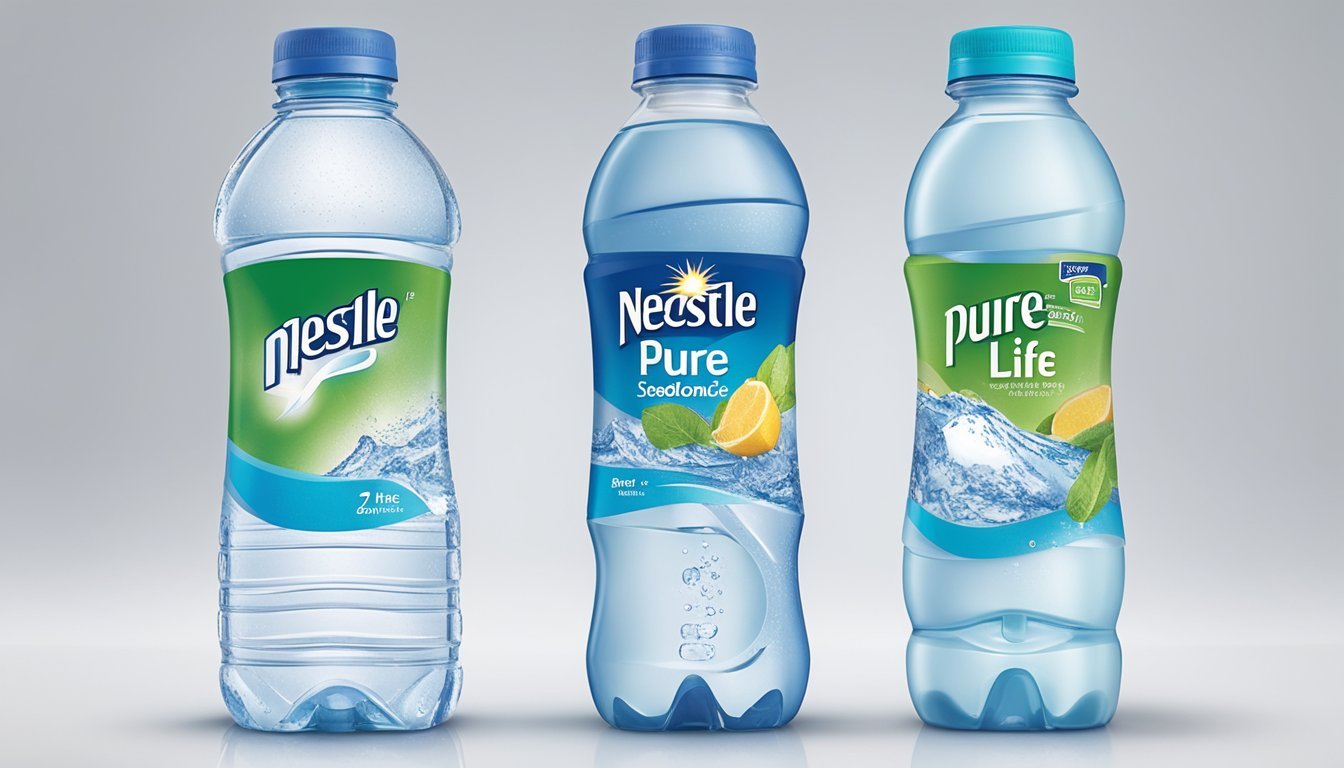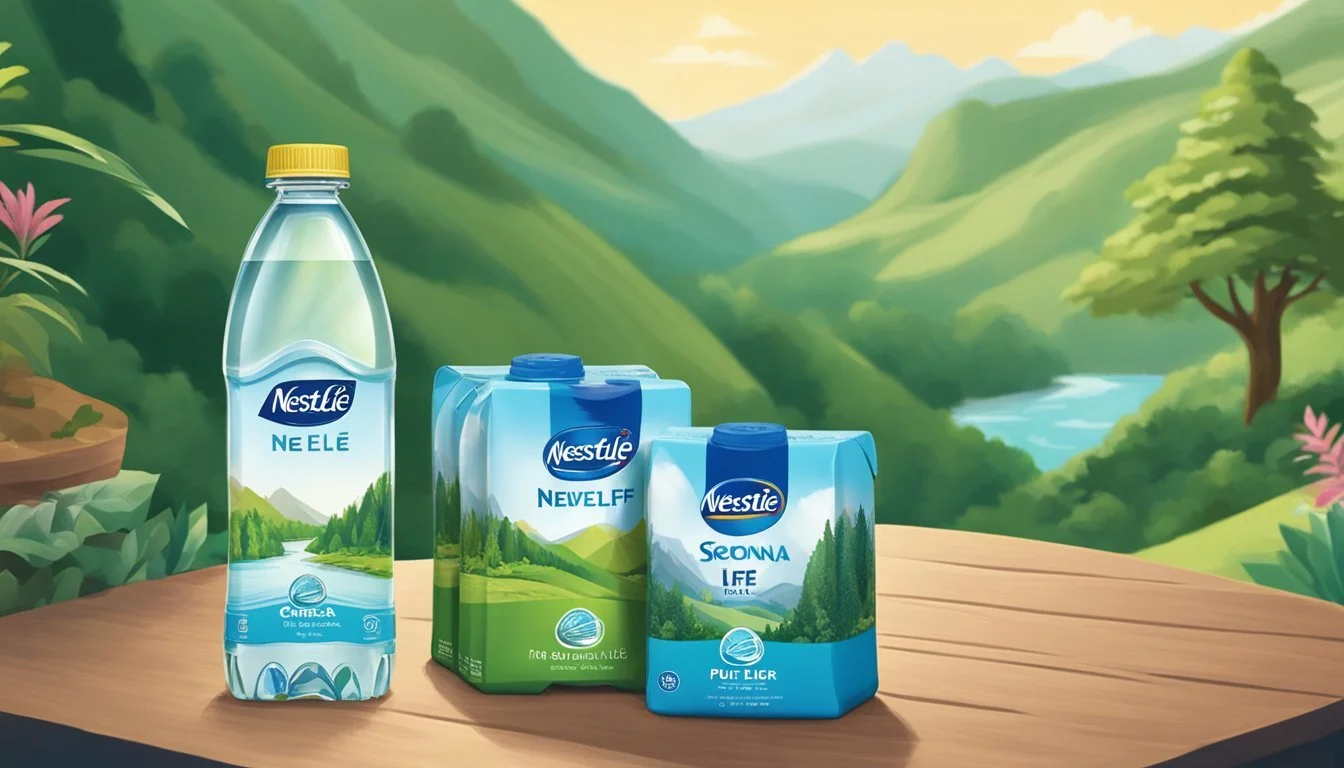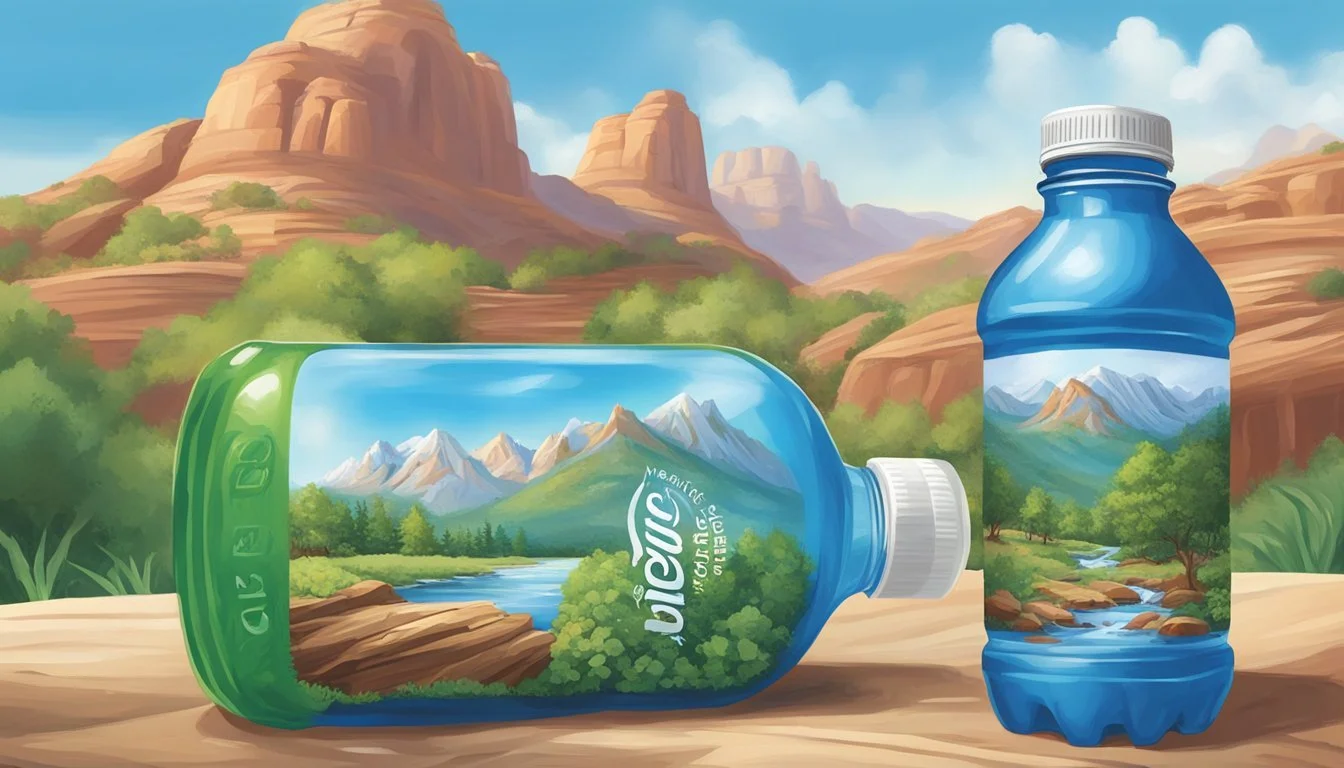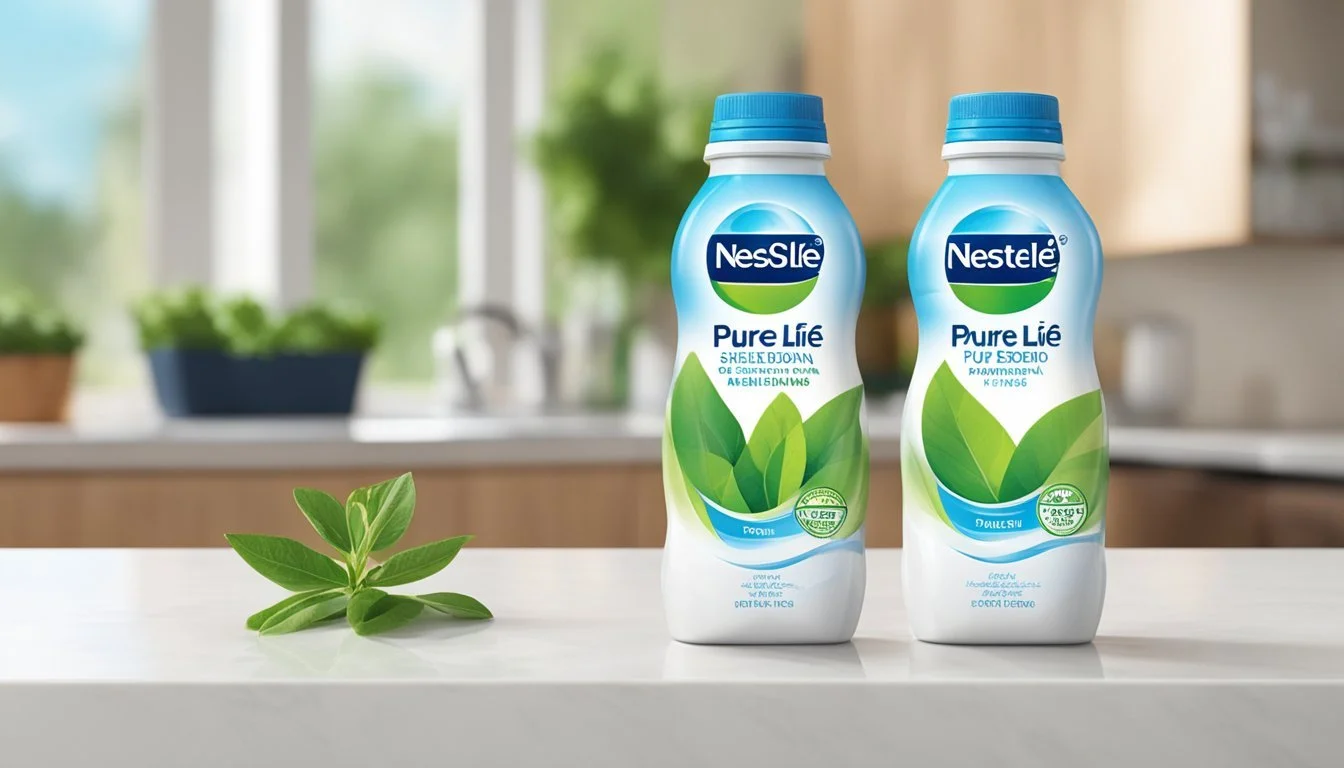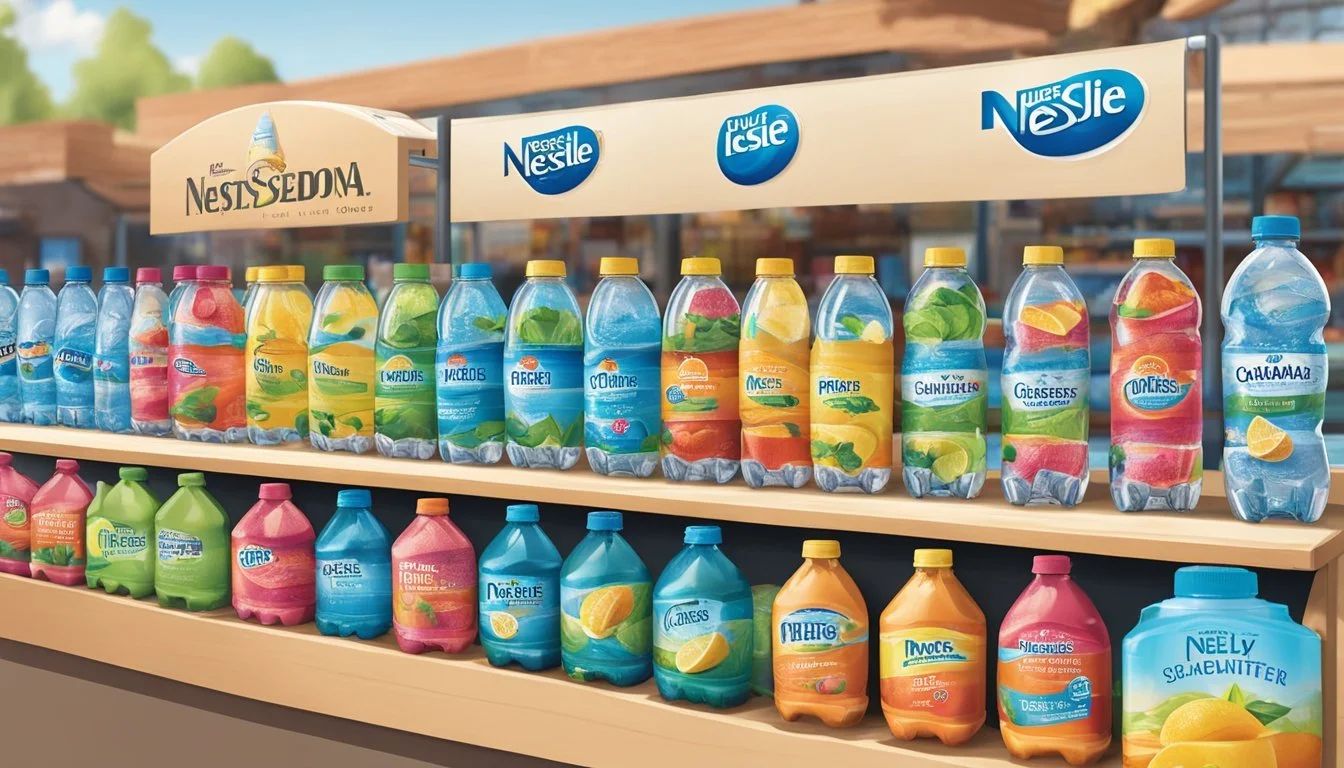Nestlé Pure Life vs. Purely Sedona
A Comprehensive Comparison
When it comes to bottled water, discerning consumers often find themselves choosing between popular brands like Nestlé Pure Life and regional favorites such as Purely Sedona. Each brand boasts unique attributes that appeal to different preferences and needs. Nestlé Pure Life, known for its widespread availability and affordability, stands out for its purification process and consistent taste.
By contrast, Purely Sedona offers a locally-sourced option that brings the natural essence of Sedona, Arizona, to the bottle. With claims of pristine quality and a fresher taste due to its minimal processing, it attracts those looking for a more artisanal experience. Balancing hydration benefits, cost, and individual preferences, the choice between these two brands ultimately boils down to what the consumer values most in their bottled water.
Exploring the Brands
In this section, we'll focus on the origin and values of Nestlé Pure Life and the source and commitments of Purely Sedona, giving a clear picture of what each brand represents and how they approach sustainability.
Nestlé Pure Life: Origin and Values
Nestlé Pure Life, a product under the global Nestlé brand, capitalizes on extensive purification processes. It is marketed as purified water, sourced mainly from municipal supplies. Nestlé aims to ensure quality hydration and consistency.
The brand's values emphasize accessibility and health. Nestlé Pure Life has initiatives focused on reducing plastic use and promoting recycling. Efforts to minimize the environmental footprint are evident, although consumers often expect more transparency regarding the water sourcing and processing stages.
Purely Sedona: Source and Commitments
Purely Sedona sources its water from natural springs in Sedona, Arizona. The brand prides itself on leveraging local, pristine sources that potentially offer higher mineral content compared to purified municipal sources.
Commitments towards sustainability are fundamental. Purely Sedona employs environmentally friendly packaging and practices to maintain a low environmental footprint. The brand's values strongly highlight natural purity and minimal processing, aiming to provide a product that resonates with eco-conscious consumers seeking authenticity in bottled water.
Water Quality and Purification
This section examines the water quality and purification methods of both Nestlé Pure Life and Purely Sedona. The focus is on their filtration processes, mineral content, and safety standards to help readers understand the distinctions between these bottled water brands.
Comparing Filtration Processes
Nestlé Pure Life uses a multi-stage filtration system that includes reverse osmosis, carbon filtration, and ultraviolet light. This process removes impurities and contaminants, aiming to produce purified water.
Purely Sedona sources its water from naturally protected artesian wells. It relies on natural filtration through layers of rock and sand, which purifies the water before it reaches the bottling stage. This method preserves natural minerals while ensuring the water remains clean and free of contaminants.
Evaluating Mineral Content
Nestlé Pure Life adds minerals such as calcium, magnesium, and potassium after the filtration process to improve taste. The specific mineral content can vary, but they ensure these are within safe and beneficial limits.
Purely Sedona’s water naturally contains minerals due to its artesian source. The water is rich in essential minerals like calcium and magnesium, which contribute to its unique taste and potential health benefits. The natural mineral content often reflects the geological characteristics of the source.
Ensuring Safety and Purity
Safety measures are paramount for both brands. Nestlé Pure Life conducts regular quality checks and adheres to strict safety protocols to ensure the purified water is free from contaminants. Multiple-stage filtration and stringent quality controls are hallmarks of their process.
Purely Sedona also emphasizes safety, employing advanced quality control techniques to maintain purity. Sourced from protected artesian wells, the water undergoes regular testing to ensure it is free from harmful substances. This natural approach combined with regular monitoring guarantees the water’s safety.
Taste and Hydration
This section explores and compares the taste appeal and hydration effectiveness of Nestlé Pure Life and Purely Sedona, detailing their unique flavor profiles, and assessing their performance in hydration.
Flavor Profile and Palate Appeal
Nestlé Pure Life, classified as purified water, stands out for its smooth taste. Some tasters noted a slight tang, but it's generally praised for its clean, plastic-free taste. The purification process creates a neutral flavor, appealing to a broad audience.
In contrast, Purely Sedona, sourced from spring water, offers a more natural taste. This brand is known for its mild mineral aftertaste which some find more refreshing. The presence of natural minerals and electrolytes gives it a slightly earthy flavor that promotes a sense of purity.
Both waters are free of artificial sweeteners and preservatives, but the source differences (purified for Nestlé and spring for Purely Sedona) create distinct flavor experiences. Fans of crisp, unmineralized water might prefer Nestlé, while those seeking a touch of natural mineral taste often opt for Purely Sedona.
Hydration Effectiveness
Hydration effectiveness is a key consideration in bottled water choice. Nestlé Pure Life is filtered to remove impurities and some minerals, offering reliable hydration suitable for everyday consumption. It’s a widely available choice for those needing consistent hydration levels.
Purely Sedona, coming from spring sources, contains naturally occurring electrolytes and minerals. These elements can enhance hydration by helping the body better absorb water. The pH levels in Purely Sedona also lean towards alkaline, which some studies suggest may aid in maintaining a balanced body pH.
While both brands effectively hydrate, the additional minerals in Purely Sedona may provide a slight edge. This can be particularly beneficial for athletes or individuals engaged in rigorous activities needing replenishment beyond just water. For daily hydration needs, either brand serves well, though personal preference in taste and perceived hydration benefits might sway the choice.
Health and Environmental Considerations
When choosing between Nestlé Pure Life and Purely Sedona, it's essential to understand their health impacts and environmental footprint. Both brands claim to uphold high standards, but their practices and sources differ.
Comparing Health Impacts
Nestlé Pure Life undergoes multiple-stage filtration with numerous quality checks to ensure safety. This process aims to remove contaminants, offering clean and safe drinking water.
Purely Sedona sources its water from natural springs. Natural spring water is often praised for its purity and minimal processing, which can preserve essential minerals that might benefit health.
While both brands offer safe hydration, Nestlé Pure Life focuses more on stringent filtration. In contrast, Purely Sedona emphasizes natural purity and mineral content. Consumers need to consider if they prefer highly filtered water or naturally sourced spring water that might retain beneficial minerals.
Environmental Impact and Sustainability
Nestlé Pure Life uses plastic bottles, which contribute to environmental waste. Although Nestlé has recycling initiatives, plastic pollution remains a concern.
Purely Sedona also uses sustainable packaging options and promotes eco-friendly practices. Their sourcing from protected springs supports ethical environmental practices.
Nestlé’s production processes must continuously improve sustainability efforts to combat plastic waste. Meanwhile, Purely Sedona’s focus on sustainable packaging and ethical sourcing helps reduce its environmental footprint.
Considering sustainability, Purely Sedona's practices might appeal more to environmentally conscious consumers. However, Nestlé's recycling initiatives show a commitment to minimizing its environmental impact despite the plastic bottle concerns.
Packaging and Convenience
When comparing Nestlé Pure Life and Purely Sedona, the focus on packaging and convenience reveals significant differences in bottle design, materials, and consumer accessibility.
Bottle Design and Materials
Nestlé Pure Life utilizes plastic bottles, which are known for their durability and lightweight nature. Their bottles are often made from recycled plastic (rPET), highlighting a move towards sustainable practices. Bottle sizes range from small individual servings to larger family-sized options, catering to varied consumer needs.
Purely Sedona, on the other hand, emphasizes minimalistic and eco-friendly packaging. Their bottles are typically made from glass or high-quality BPA-free plastic, which appeals to health-conscious consumers. Despite being heavier than plastic counterparts, glass bottles are fully recyclable and offer a premium feel.
Accessibility and Consumer Usage
Nestlé Pure Life is widely available in multiple retail environments, including supermarkets, convenience stores, and online platforms. Consumers appreciate the ergonomic design of the bottles, which facilitates easy handling and convenience during activities like travel or sports.
Purely Sedona targets a niche market with its premium positioning. Their bottles are more likely to be found in health food stores or through specialty distributors. While this may limit some accessibility, the focus on eco-friendly packaging resonates with an audience that prioritizes sustainability and quality over sheer convenience.
By addressing the specific needs of their respective consumers, both brands provide tailored solutions through their packaging choices and market availability.
Market Perspective
From consumer preferences to brand positioning, understanding the market dynamics between Nestlé Pure Life and Purely Sedona is key to evaluating which bottled water stands out. Factors like water source, packaging, and pricing all influencing consumer choices.
Brand Comparisons and Alternatives
Nestlé Pure Life enjoys a substantial international presence. It sources its water from various locations, ensuring a consistent supply. With stringent quality checks, Pure Life aims to provide safe hydration. On the other hand, Purely Sedona prides itself on its local sourcing from natural springs in Sedona, Arizona, emphasizing transparency in its practices.
Major brands like Aquafina, Dasani, Fiji, Voss, and Evian offer various alternatives. These brands often compete in the same market segments, from mainstream to premium. Consumers prioritize factors such as taste, purity, and environmental impact. Nestlé Pure Life's wide availability might appeal to cost-conscious buyers, whereas Purely Sedona's local sourcing caters to those who value sustainability.
Consumer Perceptions and Trends
Consumer perceptions play a crucial role in bottled water brand success. Many consumers opt for well-known brands like Nestlé Pure Life due to assumed reliability. Yet, there's a rising trend toward premium brands like Fiji and Voss, driven by a desire for superior quality and unique sourcing.
Transparency is increasingly important. Brands that openly disclose their water sources and filtration processes, like Purely Sedona, are gaining favor. Consumer insights reveal that ethical and environmental considerations are influencing purchasing decisions more than ever. Packaging choices also impact perceptions, with many consumers preferring eco-friendly options.
By focusing on these consumer trends, brands can better align themselves with market priorities and secure a competitive edge.
Regulatory and Quality Standards
Examining the regulatory and quality standards of Nestlé Pure Life and Purely Sedona involves comparing their compliance with industry benchmarks, their certifications, and their emphasis on transparency and consumer trust.
Compliance and Certifications
Both brands must adhere to strict FDA and EPA standards. Nestlé Pure Life complies with FDA's Standard of Quality (SOQ) for bottled water, ensuring contaminants remain within safe limits. Purely Sedona also aligns with FDA and local state regulations, supporting its purity and safety guarantees.
Nestlé Pure Life undergoes regular testing for contaminants, including lead, to uphold health standards. Purely Sedona uses artisan water sources and maintains its certified status with the NSF International, which further substantiates its commitment to quality control and consumer health.
Monitoring their compliance, both brands release annual water quality reports. This transparency confirms their adherence to regulatory requirements and offers insight into their rigorous testing processes.
Transparency and Trust
Providing clear information about water sources and treatment processes builds trust. Nestlé Pure Life labels its bottles with detailed source information and treatment methods, such as reverse osmosis. It discloses regular quality reports, promoting consumer trust in the brand’s commitment to purity and health.
Purely Sedona, sourced from natural artisan wells in Arizona, emphasizes its minimally processed water. The brand highlights its natural source and comprehensive quality control measures through transparent reports. These efforts underscore the brand’s dedication to maintaining safety and fostering consumer confidence.
Consumer trust is further enhanced by easily accessible information on both brands’ websites. Nestlé Pure Life and Purely Sedona emphasize their commitment to transparency, crucial for ensuring consumer confidence and loyalty.
Pricing and Value
Pricing and value can be critical factors when choosing between Nestlé Pure Life and Purely Sedona. These aspects influence consumer preferences and play a significant role in market positioning.
Cost Analysis
Nestlé Pure Life is known for its affordable pricing. This brand leverages its extensive global distribution network to keep costs down. A typical 24-pack of Nestlé Pure Life usually costs around $4 to $6 USD, making it an economical choice for many consumers.
Purely Sedona, on the other hand, positions itself as a premium brand. The cost reflects its sourcing from artesian springs in Sedona, Arizona, and more specialized packaging. Consequently, a 24-pack may range from $12 to $18 USD, catering to a market willing to pay for perceived higher quality.
Consumer Value Proposition
Nestlé Pure Life offers significant value in terms of cost-effectiveness and accessibility. It is widely available in supermarkets and online, appealing to budget-conscious consumers. The brand's focus on stringent quality control processes adds perceived value without significantly impacting the price.
Purely Sedona’s value proposition lies in its premium branding and superior sourcing. Consumers who prioritize high-quality, artisan spring water are more likely to view Purely Sedona as worth the higher price. The brand targets those willing to pay more for what is marketed as a pure and exclusive water source.
More About Nestlé Pure Life
Acqua Panna vs Nestle Pure Life: Which Bottled Water is Better?
Aquafina vs Nestle Pure Life: Which Bottled Water is Better?
Arrowhead vs Nestle Pure Life: Which Bottled Water is Better?
Boxed Water vs Nestle Pure Life: Which Bottled Water is Better?
Core Hydration vs Nestle Pure Life: Which Bottled Water is Better?
Deer Park vs Nestle Pure Life: Which Bottled Water is Better?
Essentia vs Nestle Pure Life: Which Bottled Water is Better?
Ice Mountain vs Nestle Pure Life: Which Bottled Water is Better?
Icelandic Glacial vs Nestle Pure Life: Which Bottled Water is Better?
Just Water vs Nestle Pure Life: Which Bottled Water is Better?
Mountain Valley Spring Water vs Nestle Pure Life: Which Bottled Water is Better?
Nestle Pure Life vs 1907water: Which Bottled Water is Better?
Nestle Pure Life vs 7-Select: Which Bottled Water is Better?
Nestle Pure Life vs Alkaline88: Which Bottled Water is Better?
Nestle Pure Life vs Antipodes: Which Bottled Water is Better?
Nestle Pure Life vs Aqua Carpatica: Which Bottled Water is Better?
Nestle Pure Life vs Big Chill: Which Bottled Water is Better?
Nestle Pure Life vs BodyArmor: Which Bottled Water is Better?
Nestle Pure Life vs Cascade Mountain: Which Bottled Water is Better?
Nestle Pure Life vs Castle Rock: Which Bottled Water is Better?
Nestle Pure Life vs CBD Living: Which Bottled Water is Better?
Nestle Pure Life vs Crystal Geyser: Which Bottled Water is Better?
Nestle Pure Life vs Crystal Lake: Which Bottled Water is Better?
Nestle Pure Life vs Essence pH10: Which Bottled Water is Better?
Nestle Pure Life vs Hawaii Volcanic: Which Bottled Water is Better?
Nestle Pure Life vs Hawaiian Springs: Which Bottled Water is Better?
Nestle Pure Life vs Kirkland Signature: Which Bottled Water is Better?
Nestle Pure Life vs Liquid Death: Which Bottled Water is Better?
Nestle Pure Life vs Mananalu: Which Bottled Water is Better?
Nestle Pure Life vs Open Water: Which Bottled Water is Better?
Nestle Pure Life vs Poland Spring: Which Bottled Water is Better?
Nestle Pure Life vs Proud Source: Which Bottled Water is Better?
Nestle Pure Life vs Pure Life: Which Bottled Water is Better?
Nestle Pure Life vs Refreshe: Which Bottled Water is Better?
Nestle Pure Life vs Richard's Rainwater: Which Bottled Water is Better?
Nestle Pure Life vs San Pellegrino: Which Bottled Water is Better?
Nestle Pure Life vs Simple Truth: Which Bottled Water is Better?
Nestle Pure Life vs Smartwater: Which Bottled Water is Better?
Nestle Pure Life vs Solan de Cabras: Which Bottled Water is Better?
Nestle Pure Life vs Talking Rain AQA: Which Bottled Water is Better?
Nestle Pure Life vs The Well: Which Bottled Water is Better?
Nestle Pure Life vs Topo Chico: Which Bottled Water is Better?
Nestle Pure Life vs Tru Alka: Which Bottled Water is Better?
Nestle Pure Life vs Weird Water: Which Bottled Water is Better?
Nestle Pure Life vs Whole Foods 365: Which Bottled Water is Better?
Nestle Pure Life vs Whole Foods Italian Still Mineral water: Which Bottled Water is Better?
Nestle Pure Life vs Zephyrhills: Which Bottled Water is Better?
More About Purely Sedona
Aqua Carpatica vs Purely Sedona: Which Bottled Water is Better?
Boxed Water vs Purely Sedona: Which Bottled Water is Better?
Castle Rock vs Purely Sedona: Which Bottled Water is Better?
Core Hydration vs Purely Sedona: Which Bottled Water is Better?
Hawaii Volcanic vs Purely Sedona: Which Bottled Water is Better?
Hawaiian Springs vs Purely Sedona: Which Bottled Water is Better?
Ice Mountain vs Purely Sedona: Which Bottled Water is Better?
Icelandic Glacial vs Purely Sedona: Which Bottled Water is Better?
Mountain Valley Spring Water vs Purely Sedona: Which Bottled Water is Better?
Poland Spring vs Purely Sedona: Which Bottled Water is Better?
Purely Sedona vs Cascade Mountain: Which Bottled Water is Better?
Purely Sedona vs Crystal Geyser: Which Bottled Water is Better?
Purely Sedona vs Crystal Lake: Which Bottled Water is Better?
Purely Sedona vs Essence pH10: Which Bottled Water is Better?
Purely Sedona vs Kirkland Signature: Which Bottled Water is Better?
Purely Sedona vs Liquid Death: Which Bottled Water is Better?
Purely Sedona vs Proud Source: Which Bottled Water is Better?
Purely Sedona vs Richard's Rainwater: Which Bottled Water is Better?
Purely Sedona vs Simple Truth: Which Bottled Water is Better?
Purely Sedona vs Talking Rain AQA: Which Bottled Water is Better?
Purely Sedona vs Weird Water: Which Bottled Water is Better?
Purely Sedona vs Whole Foods 365: Which Bottled Water is Better?
Purely Sedona vs Whole Foods Italian Still Mineral water: Which Bottled Water is Better?
San Pellegrino vs Purely Sedona: Which Bottled Water is Better?
Solan de Cabras vs Purely Sedona: Which Bottled Water is Better?
Zephyrhills vs Purely Sedona: Which Bottled Water is Better?

